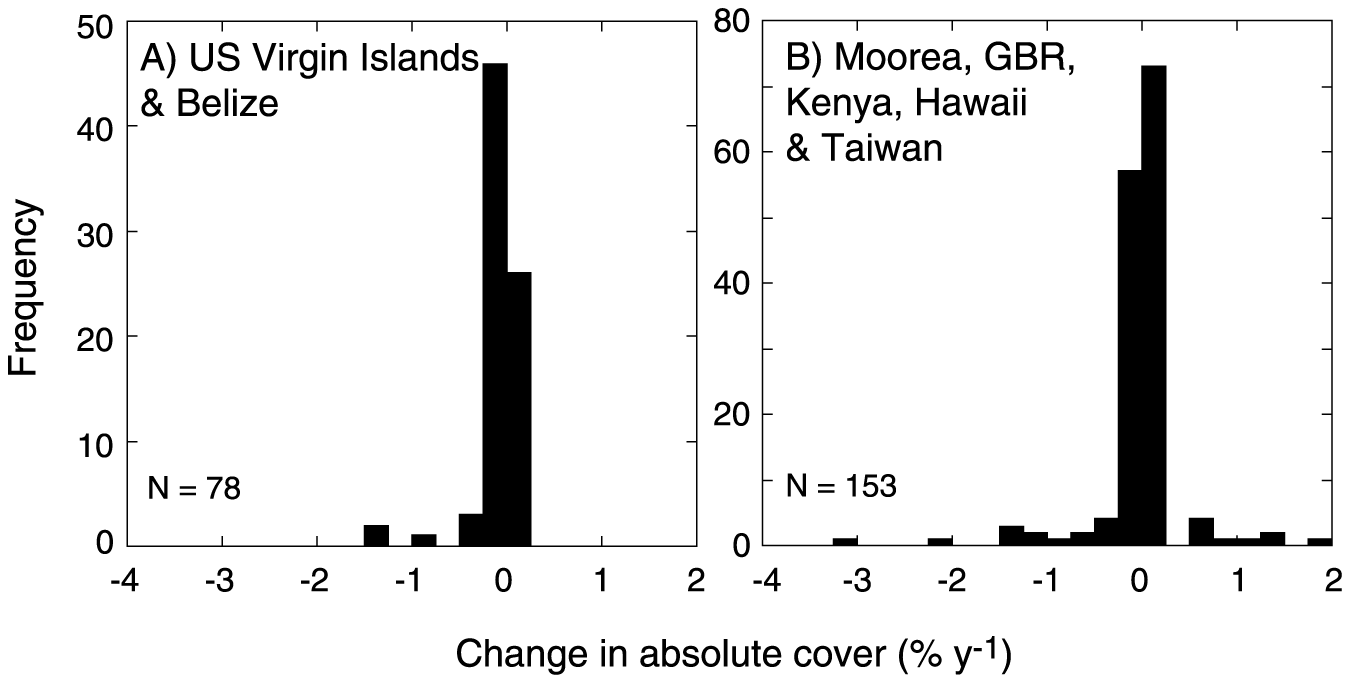A study from UCSB’s National Center for Ecological Analysis and Synthesis evaluates reef corals’ ability to persist over various time scales. The following is a UCSB Science and Technology press release by Julie Cohen, writing for The Current on October 1, 2014 and with the title above:
Contrary to the popular research-based assumption that the world’s coral reefs are doomed, a new longitudinal study from UC Santa Barbara’s National Center for Ecological Analysis and Synthesis (NCEAS) paints a brighter picture of how corals may fare in the future. An NCEAS working group reports that there will be winners and losers among coral species facing increasing natural and human-caused stressors. However, its experts demonstrate that a subset of the present coral fauna will likely populate the world’s oceans as water temperatures continue to rise. The findings were published today in PLOS ONE.
Drawn from universities in California (including UCSB), Hawaii and New Hampshire, the 20 scientists in the working group — Tropical Coral Reefs of the Future: Modeling Ecological Outcomes from the Analyses of Current and Historical Trends — sought to understand the future changes in coral reefs motivated by the threat of increasing ocean temperatures. “This NCEAS working group brought together coral reef experts with diverse perspectives from ecology and paleoecology,” said Frank Davis, the director of NCEAS. “The ongoing collaborations have been creative and productive.”
To simulate future outcomes, the researchers analyzed contemporary and fossil coral reef ecosystem data sets from two Caribbean locations in the U.S. Virgin Islands and Belize, and from five Indo-Pacific locations in Moorea, Taiwan, Hawaii, Australia’s Great Barrier Reef, and Kenya. Based on this cumulative knowledge, the team built a trait-based dynamic model to explore ecological performance in a warmer future. “Although many corals are becoming less abundant, there remain a number of species that are holding their own or increasing in abundance and these corals will populate tropical reefs over the next few centuries,” said principal investigator and lead author Peter Edmunds, a biology professor at California State University, Northridge.
The study uses current case studies to describe the events taking place on extant reefs; it also uses fossil records to explain the temporal novelty of the changes affecting the community ecology on these reefs. The investigators’ mathematical model provides insight into the future ecological fate of coral reefs under increased thermal stress.
The working group’s analysis shows that the winning subset coral species is fast-growing, phenotypically smaller and wider, and more stress-resistant, and that it readily produces offspring. Sensitivity analyses also demonstrate that thermal tolerance, growth rate and longevity are predictors of coral persistence when under thermal stress. While this subset of species still supports diversity, a lot is still unknown about its functionality.
“This work is important as it reveals a range of nuanced outcomes for tropical reef corals other than near-complete loss of live coral cover in the face of the current onslaught of environmental assaults,” Edmunds said. “While it is unlikely future tropical reefs will provide the same ecological goods and services as the coral reefs of the past, our study provides optimism that some reef corals will persist in a warmer and more acidic future.”






